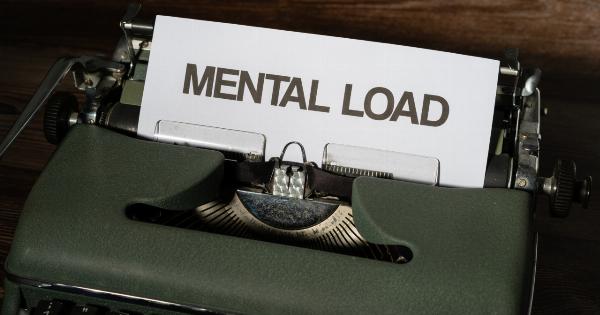When it comes to achieving success in any endeavor, minimizing mistakes is crucial. Mistakes can lead to setbacks, wasted resources, and even failure. However, by following specific steps, you can significantly reduce the chances of making costly errors.
In this article, we will explore effective strategies and techniques to minimize mistakes in various aspects of life.
1. Planning and Organization
One of the primary reasons for mistakes is a lack of proper planning and organization. Before undertaking any task or project, it is essential to create a clear plan and structure. Here are a few steps to help you effectively plan and organize:.
1.1 Define Your Goals and Objectives
Start by clearly defining your goals and objectives. Understand what you are trying to achieve and the specific outcomes you desire. This clarity will guide your decision-making process and allow you to stay focused.
1.2 Break Down Tasks
Breaking down your tasks into smaller, manageable steps makes the overall process less overwhelming. It helps you identify potential pitfalls and ensures that you do not overlook any crucial details.
1.3 Set Realistic Deadlines
Taking on too much within a limited timeframe often leads to mistakes. Set realistic deadlines for each task and allocate your time accordingly. This approach allows you to work efficiently and reduces the chances of errors due to rushing or burnout.
2. Continuous Learning and Improvement
Learning from your mistakes and constantly seeking ways to improve is a powerful strategy for minimizing errors. Here are some steps you can take to foster continuous learning:.
2.1 Analyze Past Mistakes
Take the time to analyze your past mistakes and understand why they happened. Identify patterns and common factors. This analysis will provide valuable insights on what areas to focus on for improvement.
2.2 Seek Feedback
Feedback from others can be invaluable in identifying blind spots and areas where you can enhance your skills or knowledge. Encourage open and honest feedback from colleagues, mentors, or trusted individuals who can provide constructive criticism.
2.3 Invest in Skill Development
Continuously invest in your personal and professional development. Attend workshops, seminars, or training programs to enhance your skills and knowledge.
Staying updated and relevant in your respective field significantly reduces the likelihood of mistakes due to outdated practices.
3. Paying Attention to Detail
Attentiveness to detail plays a crucial role in minimizing mistakes. Even the smallest oversight can have significant consequences. Here are some steps to improve your attention to detail:.
3.1 Stay Focused
Maintaining focus is essential in avoiding mistakes. Eliminate distractions and create an environment conducive to concentration.
Practice techniques like time blocking or the Pomodoro Technique to enhance your ability to stay focused for extended periods.
3.2 Double-Check and Review
Double-checking your work before considering it complete is an effective way to catch and correct errors. Review your work meticulously, paying attention to every detail.
This step is especially crucial in tasks that involve critical information or sensitive data.
3.3 Create Checklists
Checklists act as beneficial tools to ensure you do not miss any essential steps or details. Develop checklists specific to your tasks or projects that you can refer to frequently.
It will serve as a reliable guide and minimize the chances of making errors due to forgetfulness.
4. Effective Communication
Inadequate or miscommunicated information is a frequent cause of mistakes. To minimize errors related to communication, follow these steps:.
4.1 Be Clear and Concise
When conveying information, be clear and concise in your communication. Avoid unnecessary jargon or complicated explanations that could lead to misunderstandings. Use simple and straightforward language to ensure your message is accurately received.
4.2 Practice Active Listening
Listening attentively to others is just as important as being clear in your own communication. Practice active listening, where you genuinely hear and understand the information being shared.
This reduces the chances of misinterpreting instructions or overlooking critical details.
4.3 Seek Clarification
If you have any doubts or uncertainties, do not hesitate to seek clarification. It is better to ask questions and seek clarity than to assume and make avoidable mistakes. Proactive communication is key to minimizing errors caused by misunderstandings.
5. Developing Resilience
Resilience is crucial in managing and bouncing back from mistakes. Here are some steps to develop resilience:.
5.1 Accept Responsibility
Accepting responsibility for your mistakes is an essential step in the learning process. Acknowledge your role in the error and focus on finding solutions rather than dwelling on the past.
This mindset shift allows you to approach mistakes with a growth-oriented perspective.
5.2 Learn from Failure
View failure as an opportunity for growth and learning. Rather than letting it discourage you, analyze the mistakes made and identify areas of improvement.
Applying these lessons to future endeavors significantly minimizes the chances of repeating such errors.
5.3 Cultivate a Positive Mindset
Maintaining a positive mindset and developing a strong belief in your abilities helps you overcome setbacks and mistakes. Adopting a growth mindset allows you to see mistakes as temporary setbacks on the path to success.
By implementing these specific steps, you can effectively minimize mistakes, whether in your personal or professional life.
Developing a proactive mindset, continuously improving your skills, and paying attention to detail will greatly enhance your overall performance and success.































